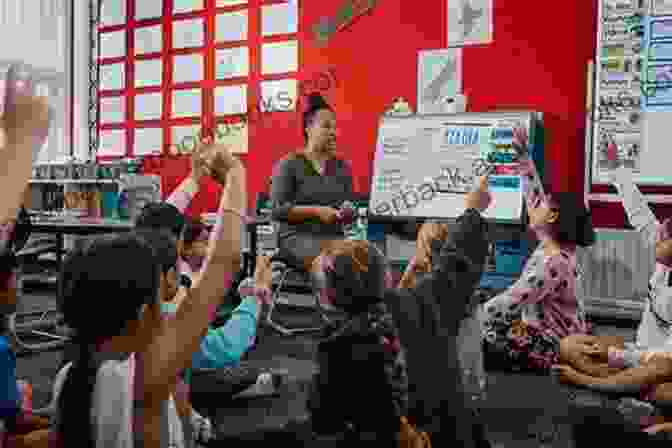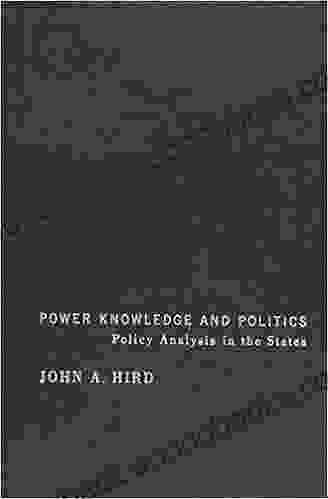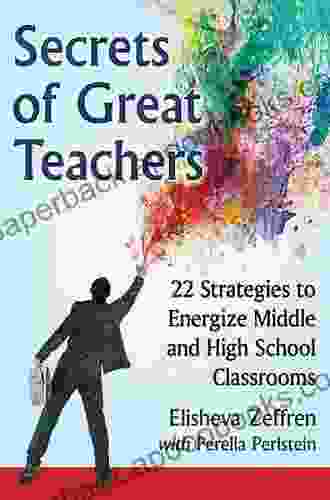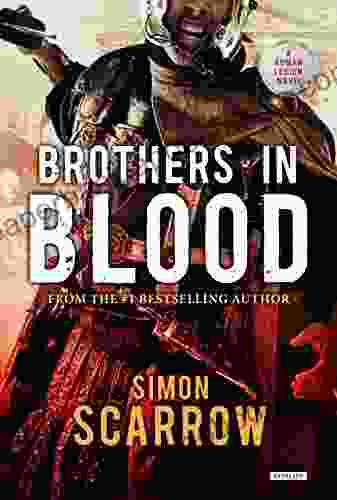Energize Your Classrooms: 22 Strategies to Captivate Middle and High School Students

Middle and high school classrooms can often face challenges in engaging students and maintaining their motivation. However, implementing effective strategies can transform these classrooms into vibrant and stimulating learning environments. "22 Strategies to Energize Middle and High School Classrooms" is an invaluable resource that provides educators with a comprehensive toolkit to revitalize their teaching practices.
Chapter 1: The Power of Positive Relationships
Building Relationships: - Establish clear expectations and boundaries. - Encourage open communication and active listening. - Create a welcoming and supportive classroom culture. - Celebrate student successes and provide ongoing feedback.
5 out of 5
| Language | : | English |
| File size | : | 11157 KB |
| Text-to-Speech | : | Enabled |
| Enhanced typesetting | : | Enabled |
| Word Wise | : | Enabled |
| Print length | : | 251 pages |
| Screen Reader | : | Supported |
Motivating Students: - Set meaningful and relevant learning goals. - Offer choices and agency to students. - Use gamification and rewards to foster engagement. - Provide opportunities for collaboration and peer support.
Chapter 2: Active and Engaging Learning
Hands-on Activities: - Incorporate experiments, simulations, and projects. - Use manipulatives and hands-on resources to make concepts tangible. - Provide opportunities for students to apply their knowledge in real-life situations.
Technology Integration: - Utilize interactive simulations, videos, and virtual reality. - Leverage educational games and apps to enhance engagement. - Foster digital collaboration through online platforms.
Chapter 3: Differentiated Instruction
Understanding Student Needs: - Assess students' learning styles, interests, and strengths. - Identify areas where additional support or challenge is needed.
Flexible Grouping: - Group students heterogeneously and homogeneously based on specific needs. - Create flexible seating arrangements to foster collaboration and individualized instruction.
Personalized Learning: - Tailor instruction to meet each student's unique learning goals. - Provide choice boards, tiered assignments, and individualized projects.
Chapter 4: Student Ownership and Responsibility
Collaborative Learning: - Encourage students to work together on projects and assignments. - Establish group norms and expectations for accountability. - Facilitate peer assessment and reflection.
Self-Assessment and Goal-Setting: - Teach students self-assessment skills and provide opportunities for reflection. - Encourage students to set personal learning goals and monitor their progress.
Student Leadership: - Empower students to lead discussions, present projects, and contribute to classroom management. - Foster a sense of ownership and responsibility within the classroom.
Chapter 5: Technology in the Classroom
Interactive Whiteboards: - Use interactive whiteboards for whole-class discussions, brainstorming, and real-time collaboration. - Integrate multimedia resources, such as videos, images, and websites.
Student Response Systems: - Utilize student response systems to engage students, assess understanding, and provide immediate feedback. - Foster active participation and make instruction more interactive.
Digital Portfolios: - Encourage students to create digital portfolios to showcase their work, reflect on their progress, and set learning goals. - Provide opportunities for formative assessment and self-evaluation.
Chapter 6: Classroom Management Strategies
Establishing Clear Rules and Procedures: - Define and communicate clear expectations regarding behavior, attendance, and participation. - Enforce rules consistently and fairly, avoiding harsh punishments.
Positive Behavior Supports: - Focus on rewarding positive behaviors rather than solely punishing negative ones. - Implement behavior plans and incentives to encourage desired behaviors.
Responsive Classroom Approach: - Foster a sense of community and belonging through responsive classroom practices. - Build positive relationships, promote social-emotional learning, and create a safe and supportive learning environment.
Chapter 7: The Art of Questioning
Types of Questions: - Open-ended questions encourage critical thinking and discussion. - Closed-ended questions assess factual knowledge. - Higher-Free Download questions promote deeper understanding and analysis.
Effective Questioning Techniques: - Ask clear and concise questions. - Use wait time to allow students to process and respond. - Rephrase or clarify questions when necessary.
Questioning Strategies: - Whole-class questioning involves asking questions to the entire class. - Small-group questioning allows for more focused discussions. - Socratic questioning encourages critical thinking and logical reasoning.
Chapter 8: Interdisciplinary Learning
Benefits of Interdisciplinary Learning: - Promotes holistic understanding of concepts. - Develops critical thinking and problem-solving skills. - Enhances students' ability to apply knowledge in real-life situations.
Interdisciplinary Projects: - Design projects that integrate multiple disciplines, such as science, history, and art. - Encourage students to explore connections between subjects.
Collaborative Unit Planning: - Collaborate with colleagues from different disciplines to develop interdisciplinary units. - Align learning goals and assessment methods to ensure coherence.
Chapter 9: Assessment that Informs Instruction
Formative Assessment: - Use formative assessments to provide ongoing feedback and adjust instruction accordingly. - Engage students in self-assessment and peer assessment.
Summative Assessment: - Design summative assessments that accurately measure student learning outcomes. - Use a variety of assessment formats, such as tests, projects, and presentations.
Data-Driven Instruction: - Collect and analyze assessment data to identify student strengths and areas for improvement. - Make data-informed decisions to improve instruction and support student learning.
Chapter 10: Collaboration with Parents and Community
Communicating with Parents: - Establish regular communication channels with parents, including email, phone calls, and conferences. - Provide updates on student progress and involve parents in decision-making.
Engaging the Community: - Partner with local businesses, organizations, and experts to enrich student learning experiences. - Invite community members to share their knowledge, skills, and perspectives.
Community Service Projects: - Implement service projects that connect students with the community and foster social responsibility. - Encourage students to engage in meaningful service experiences that benefit others.
Chapter 11: Caring for Yourself as an Educator
Managing Stress: - Practice self-care techniques, such as exercise, meditation, and connecting with loved ones. - Set boundaries and prioritize your well-being.
Building a Support System: - Connect with other educators, mentors, and support groups to share experiences and provide encouragement. - Seek professional help if needed to manage stress and maintain your mental health.
Continuing Professional Development: - Pursue ongoing learning opportunities to enhance your teaching skills and knowledge. - Attend workshops, read professional books, and collaborate with colleagues to stay informed about best practices.
Chapter 12: The Power of Belief
Believing in Your Students: - Convey high expectations for all students, regardless of their backgrounds or abilities. - Encourage students to believe in themselves and their potential. - Celebrate their successes and provide support during challenges.
Creating a Growth Mindset: - Foster a classroom culture that values effort and perseverance. - Encourage students to take risks and learn from their mistakes. - Focus on progress and growth rather than fixed abilities.
Inspiring Students to Excel: - Share your own passions and enthusiasm for the subject matter. - Connect learning to real-world applications and make lessons relevant. - Provide opportunities for students to showcase their talents and contribute to the classroom community.
"22 Strategies to Energize Middle and High School Classrooms" is an invaluable guide for educators seeking to transform their classrooms into thriving learning environments. By implementing these evidence-based strategies, teachers can ignite students' passions, empower them as learners, and foster a culture of success.
Call to Action: Free Download your copy of "22 Strategies to Energize Middle and High School Classrooms" today and embark on a journey to energize your classrooms and empower your students to reach their full potential!

5 out of 5
| Language | : | English |
| File size | : | 11157 KB |
| Text-to-Speech | : | Enabled |
| Enhanced typesetting | : | Enabled |
| Word Wise | : | Enabled |
| Print length | : | 251 pages |
| Screen Reader | : | Supported |
Do you want to contribute by writing guest posts on this blog?
Please contact us and send us a resume of previous articles that you have written.
 Book
Book Novel
Novel Page
Page Chapter
Chapter Text
Text Story
Story Genre
Genre Reader
Reader Library
Library Paperback
Paperback E-book
E-book Magazine
Magazine Newspaper
Newspaper Paragraph
Paragraph Sentence
Sentence Bookmark
Bookmark Shelf
Shelf Glossary
Glossary Bibliography
Bibliography Foreword
Foreword Preface
Preface Synopsis
Synopsis Annotation
Annotation Footnote
Footnote Manuscript
Manuscript Scroll
Scroll Codex
Codex Tome
Tome Bestseller
Bestseller Classics
Classics Library card
Library card Narrative
Narrative Biography
Biography Autobiography
Autobiography Memoir
Memoir Reference
Reference Encyclopedia
Encyclopedia Jenifer Ruff
Jenifer Ruff John Roedel
John Roedel Jessie May
Jessie May Jessica Ramer
Jessica Ramer Jean Racine
Jean Racine Thomas P Kapsidelis
Thomas P Kapsidelis Ricky Tims
Ricky Tims Jennifer Williams
Jennifer Williams Peter G Northouse
Peter G Northouse Ruth Marie Paterson
Ruth Marie Paterson Valarie Bradshaw
Valarie Bradshaw Lope De Vega
Lope De Vega Stephen Palmer
Stephen Palmer Robert E Cripe
Robert E Cripe Ronald H Heck
Ronald H Heck Liz Long
Liz Long Jenny Colgan
Jenny Colgan Jim Tankersley
Jim Tankersley Phil M Cohen
Phil M Cohen Kimani Lauren
Kimani Lauren
Light bulbAdvertise smarter! Our strategic ad space ensures maximum exposure. Reserve your spot today!

 Corey HayesTraditions and Hearthside Stories of West Cornwall: A Journey into the Heart...
Corey HayesTraditions and Hearthside Stories of West Cornwall: A Journey into the Heart... Clarence MitchellFollow ·11.4k
Clarence MitchellFollow ·11.4k William FaulknerFollow ·18.8k
William FaulknerFollow ·18.8k Henry GreenFollow ·9k
Henry GreenFollow ·9k James JoyceFollow ·10.7k
James JoyceFollow ·10.7k Isaac AsimovFollow ·6.3k
Isaac AsimovFollow ·6.3k Thomas MannFollow ·6.9k
Thomas MannFollow ·6.9k Geoffrey BlairFollow ·3.9k
Geoffrey BlairFollow ·3.9k Jamison CoxFollow ·9.9k
Jamison CoxFollow ·9.9k

 Preston Simmons
Preston SimmonsEmbark on a Literary Odyssey with "Walking on Water": A...
Prepare to be swept...

 Ernesto Sabato
Ernesto SabatoUnlocking Policy Analysis: Dive into the Intricacies of...
: The Realm of Policy...

 Forrest Reed
Forrest ReedThe Road to Grace Walk: A Journey of Spiritual Growth and...
In the tapestry of life, we...

 Evan Simmons
Evan SimmonsTip Neill and the Democratic Century: A Political Odyssey...
The Rise of a Political Giant In the...

 Mark Mitchell
Mark MitchellUnwrap the Magic: A Review of Christmas Memory by Richard...
As the cold winter months draw near, and...

 Percy Bysshe Shelley
Percy Bysshe ShelleyBeyond the Veil: Delve into the Realm of Spirit with In...
Unveiling the Mysteries of the Unseen...
5 out of 5
| Language | : | English |
| File size | : | 11157 KB |
| Text-to-Speech | : | Enabled |
| Enhanced typesetting | : | Enabled |
| Word Wise | : | Enabled |
| Print length | : | 251 pages |
| Screen Reader | : | Supported |









